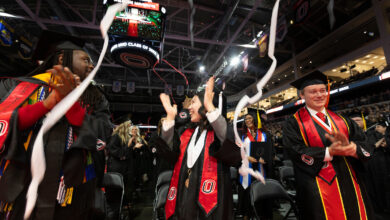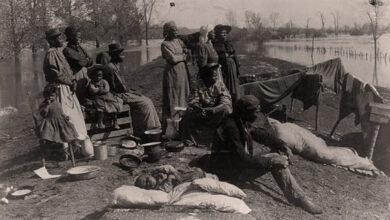‘Good Life’ district proposed on I-80 near Nebraska Crossing

The grand vision to create an entertainment and shopping district with regional drawing power along Interstate 80 between Lincoln and Omaha is apparently moving ahead.
The Nebraska Department of Economic Development has received an application to create a Good Life district in the area surrounding the popular Gretna shopping center Nebraska Crossing.
State lawmakers last session passed the Good Life Transformational Projects Act allowing creation of such districts as an economic development tool. Good Life districts approved by the department will receive a reduction in state sales tax from 5.5% to 2.75% for sales made within the district.
Nebraska Crossing owner Rod Yates testified last spring as a proponent of the legislation, describing his vision for transforming the area around Interstate 80 and Highway 31 into a regional entertainment, dining and shopping destination. Yates could not be reached to say whether he submitted the application.
People are also reading…
Last spring, he told lawmakers his goal was to assemble 1,000 acres around Nebraska Crossing for a project that could attract as many as 15 million annual visitors. He told lawmakers the project couldn’t move forward without the legislation.
Under the new law, nearly all the details in the application, including who filed it, are confidential.
The few details made public by the department, at The World-Herald’s request, are intriguing. The jobs and investment numbers estimated for the 25-year operating period of the district are substantial.
Kate Ellingson, the department’s director of marketing and public relations, said the total new development costs estimated in the application for the project are $3.2 billion dollars.
The number of new jobs estimated to be created as a result of the project: 29,867.
Ellingson said the application is under review.
Under the law, the applicant must demonstrate a threshold amount of new development costs and jobs to be created. They also must demonstrate that new tax revenue will offset the lost revenue from the district, she said.
There are other requirements, among them describing how the project will be financed, the expectations for the number of visitors, the economic impact and the expected return on state and local investment.
Department officials declined to release specifics on the proposed boundaries of the district.
Officials indicated they received a map, but not a legal description of the proposed district, and that they believe that the map is part of the application and thus confidential. By law, the district cannot exceed 2,000 acres in size.
Ellingson said there are likely a number of ways that a developer could take advantage of a reduced sales tax rate.
One way would be for the city to levy an occupation tax on the businesses within the district, she said. Another benefit from a district designation is that the developer will receive the reduced state sales tax rate on taxable building materials used inside the district as the investment is made, she said.
Gretna Mayor Mike Evans said city officials aren’t involved in making the application, but they support the concept.
City officials have always known that the interchange was special because of its location between Omaha and Lincoln, Evans said.
“If we can have a tool that can really bring our cities together and also provide some opportunities for destination-type venues, we support it,” he said. “I think part of this is the Unicameral’s vision of what they want to bring, and we really support helping them deliver that.”
The bill allowing the creation of Good Life districts was introduced by State Sen. Lou Ann Linehan of the Omaha area.
Linehan said some retailers won’t come to Omaha because they believe the market is too small.
A development at the interchange would give retailers and entertainment venues access to customers in both Lincoln and Omaha, she said.
“So for some of the retailers and entertainment and hotels that we don’t have, that’s huge,” she said.
Linehan, in advocating for the legislation, had called it a “game changer,” and she said it could lead to development of something similar to Legends, an outdoor shopping and entertainment destination off I-435 in Kansas City, Kansas.
The bill, she testified, would bring new sales tax revenue to the state through increased destination tourism, including out-of-state visitors and new-to-market retail, and provide amenities and options for shopping, dining, youth sports and entertainment.
Linehan said it was a way to improve the quality of life for Nebraskans and keep them from moving elsewhere.
Our best Omaha staff photos & videos of November 2023

Performers practice their Cyr Wheel for the Cirque du Soleil’s Corteo at CHI Health Center Omaha on Wednesday, Nov. 29, 2023.

Brothers Finn, 10, and Jaxson Mlynarik, 14, of Winterset, Iowa, stand together with a lit up snowflake during the Holiday Lights Festival lighting ceremony at The RiverFront Park in Omaha on Saturday, Nov. 25, 2023.

Sandhills/Thedford’s Zeb Wilde (32) and Carson Cooksley (14) celebrate with fans Kaden Haake and Connor Cooksley following the Wynot vs. Sandhills/Thedford Nebraska Class D2 State Football Championship at Memorial Stadium in Lincoln on Monday, Nov. 20, 2023. Sandhills/Thedford won the title 50-12.

Creighton’s Trey Alexander (23) controls the ball in the Texas Southern vs. Creighton men’s college basketball game at the CHI Health Center in Omaha on Saturday, Nov. 18, 2023.

Justin Holzepfel puts Christmas lights on his roof as his daughter, Madalyn, 5, watches on Tuesday, Nov. 14, 2023.

Nebraska’s Nick Henrich (3) pressures Wisconsin’s Tanner Mordecai (8) during the second half of a college football game at Camp Randall Stadium in Madison, Wis., on Saturday, Nov. 18, 2023.

Nebraska’s Thomas Fidone II (24) huddles Wisconsin’s Jason Maitre (23) during the second half of a college football game at Camp Randall Stadium in Madison, Wis., on Saturday, Nov. 18, 2023.

Nebraska’s Chubba Purdy (12) throws under pressure from Wisconsin’s Jake Chaney (36) during the first half of a college football game at Camp Randall Stadium in Madison, Wis., on Saturday, Nov. 18, 2023.

Nebraska’s Chubba Purdy (12) scores on a 55-yard run on the first drive during the first half of a college football game at Camp Randall Stadium in Madison, Wis., on Saturday, Nov. 18, 2023.

Nebraska’s Harper Murray (27) goes up for the ball during the first set of a college volleyball match against Michigan at the Devaney Center in Lincoln on Friday, Nov. 17, 2023.

Jaye’real Coppage 12, dibbles a basketball in the gym at the Salvation Army Omaha North Worship & Service Center located at 2424 Pratt St, on Thursday, Nov. 9, 2023. Paint from the mural on the wall is peeling.

Atlas Swan, 3, helps his mother, Eryn Swan’s plants on the porch of their Bemis Park home on Wednesday, Nov. 8, 2023.

Kids play basketball in the gym at the Salvation Army’s North Corps Community Center, 2424 Pratt St., on Nov. 9.

North Dakota State’s Ryan Sletten (24) tries to stop a Creighton’s Ryan Kalkbrenner (11) dunk at CHI Health Center on Saturday, Nov. 11, 2023.

Police escort a truck carrying the Durham Museum Christmas heads north on I480 toward Woolworth Avenue on Monday, Nov. 13, 2023.

A Union Pacific climbs out of a tree after securing it to a crane on Monday, Nov. 13, 2023.

Creighton’s Steven Ashworth (1) celebrates a three-point basket against North Dakota State at CHI Health Center on Saturday, Nov. 11, 2023.

North Dakota State’s Ryan Sletten (24) tries to stop a Creighton’s Ryan Kalkbrenner (11) dunk at CHI Health Center on Saturday, Nov. 11, 2023.

Nebraska’s Ty Robinson (9) walks off the filed following the college football game at Memorial Stadium in Lincoln on Saturday, Nov. 11, 2023. Maryland won the game 13-10.

Nebraska’s Blaise Gunnerson (97) stretches out to try an block a pass from Maryland’s Taulia Tagovailoa (3) to Maryland’s Roman Hemby (24) during the first half of a college football game at Memorial Stadium in Lincoln on Saturday, Nov. 11, 2023.

Nebraska’s Harper Murray (27) watches as Nebraska’s Merritt Beason (13) misses the ball in the Northwestern vs. Nebraska college volleyball match at the Devaney Center in Lincoln on Wednesday, Nov. 8, 2023.

Brooke Holloway, Matthew McMullen Bill Holloway and Cindy Holloway cross the Red Cedar river on their way to Spartan Stadium prior to a college football game between the Nebraska Huskers and the Michigan State Spartans in East Lansing, Mich. on Saturday, Nov. 4, 2023.

Nebraska and Michigan State fans react differently on a penalty call against Michigan State during the first half of a college football game at Spartan in East Lansing, Mich. on Saturday, Nov. 4, 2023.

Nebraska’s Omar Brown (12) sits in a hall before playing Michigan State in a college football game at Spartan in East Lansing, Mich. on Saturday, Nov. 4, 2023.

Nebraska’s Heinrich Haarberg (10), Nebraska’s Jeff Sims (7) and Nebraska’s Chubba Purdy (12) have a moment in a hall before playing Michigan State in a college football game at Spartan in East Lansing, Mich. on Saturday, Nov. 4, 2023.

A member of the Michigan State marching band drums upside down during the second half of a college football game at Spartan in East Lansing, Mich. on Saturday, Nov. 4, 2023.

Omaha Skutt raises their trophy following the Norris vs. Omaha Skutt Nebraska State Volleyball Class B Championship match at the Devaney Center in Lincoln on Saturday, Nov. 4, 2023. Omaha Skutt won the title in three sets.

Sumner-Eddyville-Miller’s Katelynn Reiter (6) serves the ball in the O’Neill St. Mary’s vs. Sumner-Eddyville-Miller NSAA Class D-1 volleyball state quarterfinal match at the Pinnacle Bank Arena in Lincoln on Thursday, Nov. 2, 2023.

Shania Twain performs at the CHI Health Center in Omaha on Thursday, Nov. 2, 2023.

Millard West’s Brody Peterson (7) runs the ball against Grand Island’s Trey Engberg (1) and Grand Island’s Justyce Hostetler (35) during the first quarter of a high school football game at Buell Stadium in Omaha on Friday, Nov. 3, 2023.

Minden’s Aubree Bules (11) serves the ball during the fourth set of the Nebraska state volleyball C-1 Championship against Kearney Catholic at the Devaney Center in Lincoln on Saturday, Nov. 4, 2023.

Overton’s JoLee Ryan (7) and Overton’s Ashlyn Florell (10) celebrate after sweeping Cambridge to win the Nebraska state volleyball D-2 Championship at Devaney Center in Lincoln on Saturday, Nov. 4, 2023.

The sun sets behind Pinnacle Bank Arena before the Huskers’ men’s basketball team tips-off against Lindenwood in Lincoln on Monday, Nov. 6, 2023.

Nebraska’s C.J. Wilcher (0) passes the ball against Florida A&M’s Jordan Chatman (2) during the first half of a college men’s basketball game at Pinnacle Bank Arena in Lincoln on Thursday, Nov. 9, 2023.

A look inside Memorial Stadium during the national anthem before the first quarter of a college football game in Lincoln on Saturday, Nov. 11, 2023.

Nebraska’s Janiran Bonner (16) runs the ball past Maryland’s Beau Brade (2) to score a touchdown during the third quarter of a college football game at Memorial Stadium in Lincoln on Saturday, Nov. 11, 2023.

Nebraska’s Malcolm Hartzog (13) pushes Maryland’s Antwain Littleton II (7) out of bounds during the third quarter of a college football game at Memorial Stadium in Lincoln on Saturday, Nov. 11, 2023.

Creighton’s Trey Alexander (23) goes up to dunk the ball against Iowa’s Tony Perkins (11) during the second half of a men’s college basketball game at the CHI Health Center in Omaha on Tuesday, Nov. 14, 2023.
joe.dejka@owh.com, 402-444-1077
























































